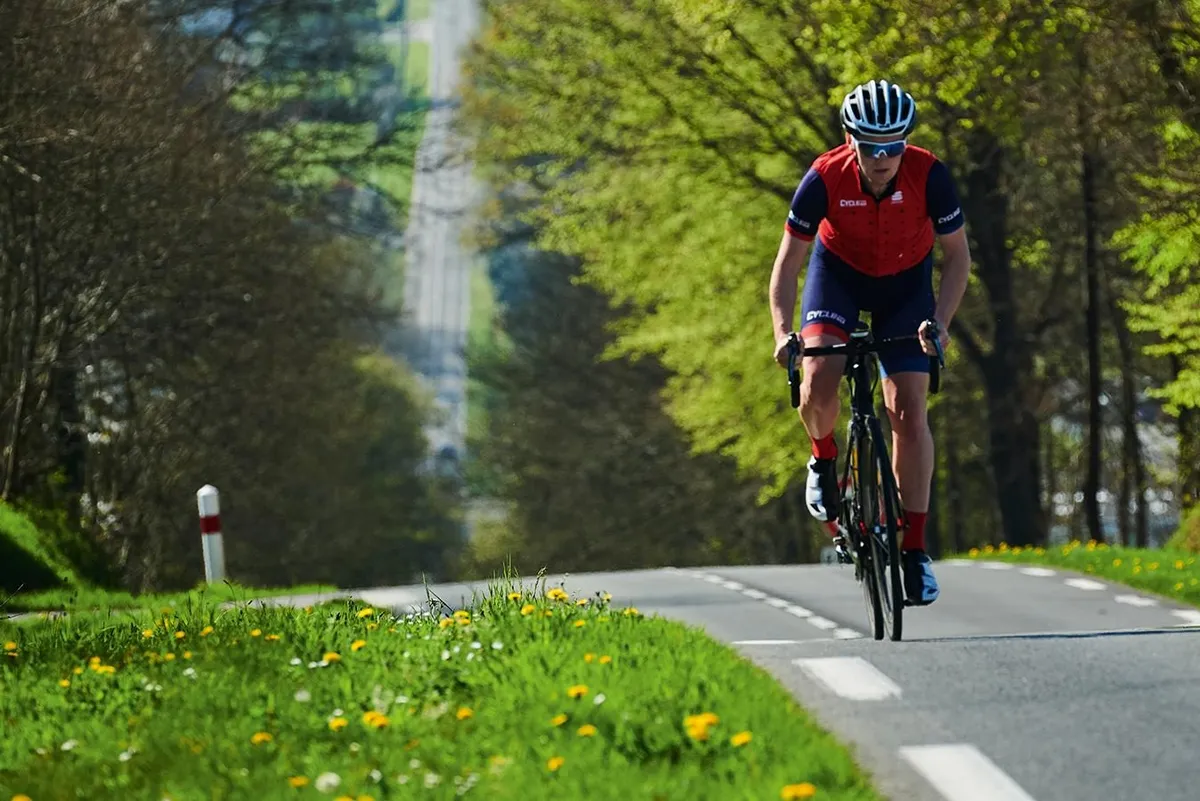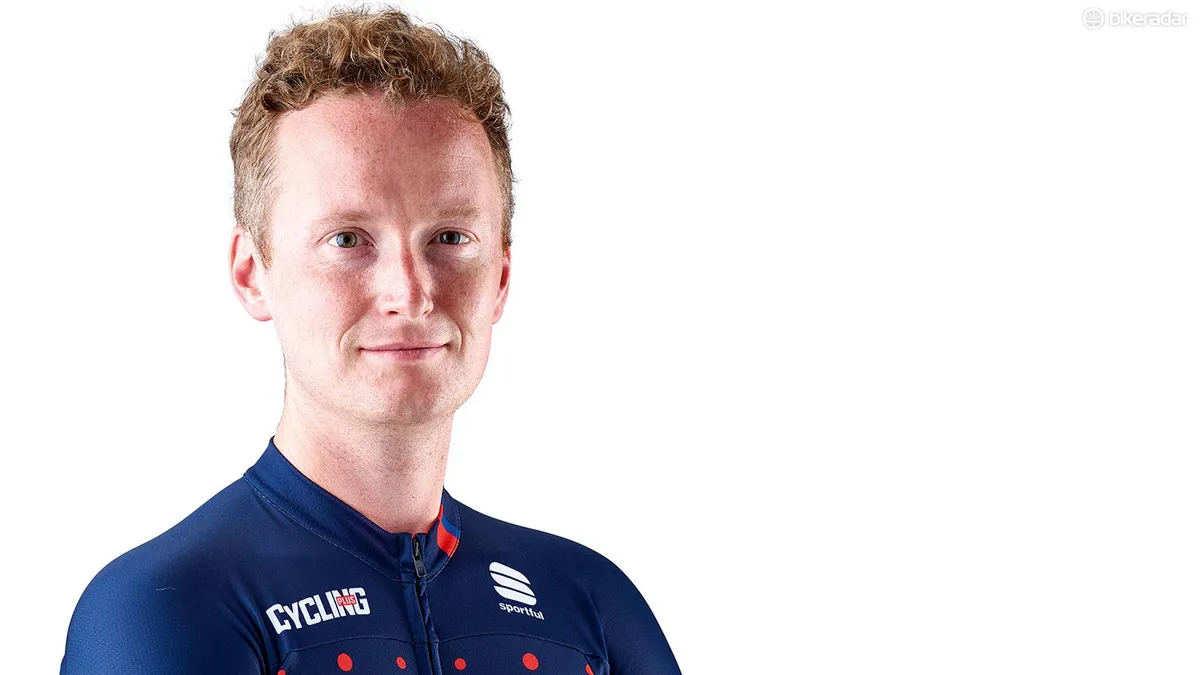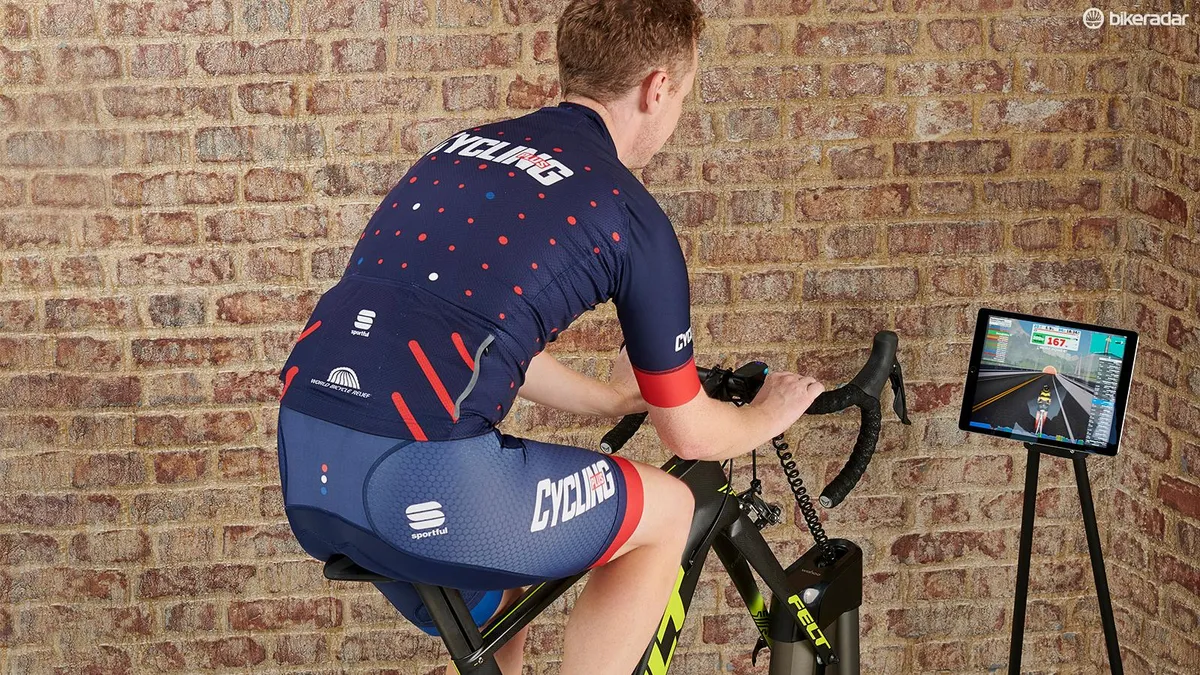This is a sponsored article in association with Zwift
Indoor and outdoor training can be painted as seasonal. The spring and summer is there to ride your bike on the road, the winter to keep fit indoors without suffering in the cold.
- Cycling Plus's trio of riders get serious with their hill climb training
- The Cycling Plus team gets to grips with Zwift’s Training Plans
- Zwift: your complete guide
It shouldn’t be seen as such a binary choice. Both can be enjoyed, interchangeably, and with the advent of Zwift, this year-round combination of indoor and out has never been easier to maintain.
Matt Rowe, of Rowe & King Cycle Coaching, has always been a big fan of turbo trainers, particularly for his clients who, generally, don’t have loads of time to train.
“Turbo sessions can get boring. Music is great, and so is watching TV or films, but Zwift has been a game-changer in keeping motivation up for our riders. We can all jump on a ride together in the game and although we all might have slight variations in the workouts we’re doing, we see each other’s avatars and it gives a sense of club run unity. All from our garages.”
We already know about the playability of Zwift, but why should someone opt to log in to this virtual world on a warm summer’s evening when the real world is looking so good?
Time to train
Time is a big factor, and when our hobby has to fight for the upper hand against work and family life, cycling can’t always come out on top. Which is where short, high-quality Zwift sessions pay dividends.
“The simple rule is that one hour on the turbo is worth at least 1.5 hours, if not more, on the road,” says Rowe. “It’s all down to muscle tension. When you freewheel round a junction, your muscles relax and your systems recharge momentarily. On the turbo, we produce those same powers but without rest, so it stresses your system that bit harder.”
In the competition season, Rowe advocates split training days (if your lifestyle permits) whereby you double up on indoor and road sessions on the same day — and still save time over going for a long road ride.

If you don’t have the time for one three-hour steady, zone 2 road ride [56–75 percent FTP], you could do an hour in the morning — perhaps your commute — and top it up with either a one-hour Zwift sweetspot session (zone 3, 76–90 percent FTP) or a half-hour high-intensity interval training, or zone 5 (106–120 percent FTP), session.
“What you want to avoid,” says Rowe, “is two high-intensity sessions in the same day. On any given day, we could all do a hard Zwift session in the morning and a tough road ride with the local chaingang. What you can’t do is that repeatedly, on back-to-back days, over a long period. Most people won’t get the necessary recovery.”
For zone 2 sessions, the key is not to be too regimented, or staying strictly within the zone — without going overboard. “It’s unstructured structure. Let the terrain dictate how hard you go. Jump onto other riders’ wheels and follow them to the top of climbs.”
It’s about finding the balance between indoor and outdoor riding. Together, they can transform your fitness. On their own, both can lead you down blind alleys.
“When the heavy snow came last winter I spent three weeks only riding indoors,” says Rowe. “My first ride outside after that and the sensation of getting out of the saddle and feeling my bike flow from side to side felt alien.
“The turbo is about supporting your cycling. If you have a big race or sportive goal, combine both to keep that feeling on the bike.”
Training Zones explained
Your training zones are the varying intensities that define any workout, using percentages of your FTP, the highest average power you can sustain for an hour.
- Zone 1 (recovery): <55% FTP
- Zone 2 (base endurance): 56–75% FTP
- Zone 3 (tempo): 76–90% FTP
- Zone 4 (lactate threshold): 91–105%
- Zone 5 (race tempo): 106–120% FTP
- Zone 6 (max effort): > 121% FTP
Cycling Plus team update
Hannah Rowe

- Watts: 139
- Zwift level: 07
- Age: 32
“This is my final update before we head off to Tenerife and climb Mount Teide, so it’s time to tell you what I’ve learned from my Zwift experience.
"So, in no particular order: I’ve seen my fitness measurably improve, on the Wattbike and on the road. I’ve watched my legs change shape — and get much harder! I don’t enjoy FTP tests, they feel too much like tests, and I need more practice at doing them. I’ve found Zwift a huge upgrade on the spin classes I used to do; it’s more fun, engaging and tracks your improvements. And I think Zwifting and road cycling are very different, but also very connected. I get enjoyment and benefits from both, just in different ways.”
John Whitney

- Watts: 262
- Zwift level: 08
- Age: 34
“My cycling year has followed a familiar pattern over the past several years. As autumn ousted summer, and the nights drew in, those post-work rides on the road become rarer, and the motivation to train, through lack of goals, dwindled. 2018’s autumn transition has been different, and it’s almost entirely down to Zwift.
"This Tenerife goal has kept my hand in on Zwift and the Wattbike, so on the occasions I’ve found time for a road ride, I’ve felt really good on the bike. It might take a little time to get my eye in on the road after near-daily sessions on the trainer, but once I do the work pays off.”
Adrian Miles

- Watts: 290
- Zwift level: 25
- Age: 38
“Ahead of the Mount Teide challenge I’m feeling in a good place with my fitness. Any fatigue from the 238km Ötztaler Radmarathon has been replaced by great legs, leaving me time to focus on improving my cadence.
"I tend to ride in too high a gear than I would like, and for a 50km climb like Teide I want to make sure my legs are spinning at more efficient revolutions per minute. I’m aiming to raise my average rpm by five to 10, so nothing too dramatic. Zwift’s workouts are perfect for achieving this, with on-screen instructions and feedback. It can feel like you are putting in a lot of effort for little speed but hopefully it’s worth it on Teide.”
